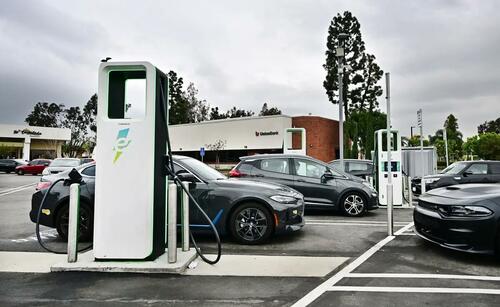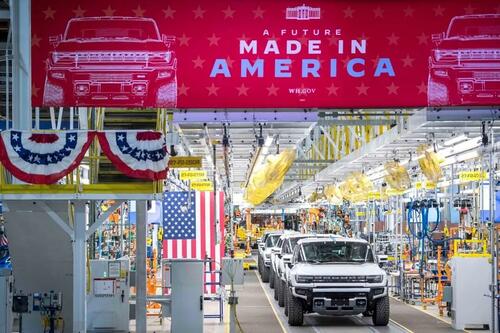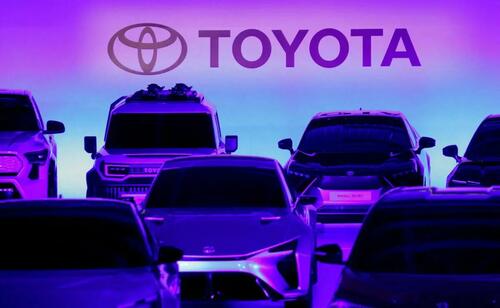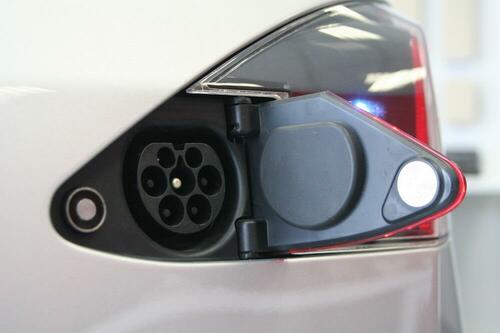Here's a very interesting question: How do you heal a society after a traumatic experience such as war? In a nutshell, you forgive people and move on. It is of course difficult to do but essential if you do not want to get into a vicious cycle of punishment and reprisals.
The examples below concern the US after the Civil war and today but it applies similarly to Israel and Ukraine where in both case accumulated hatred prevents a solution to be found. If people must be punished for their deeds then why should they compromise in the first place? And sure enough they won't. War until the last man standing. Are we really unable to learn as a society?
Authored by Josiah Lippincott via American Greatness,
This week, the left-wing organization Swords into Plowshares began the process of melting down the statue of Robert E. Lee that stood in Charlottesville, Virginia.
The images from the ordeal contain deep spiritual significance. A profound sense of foreboding washed over my heart when I saw the bronze face of the Southern hero, glowing red hot moments before annihilation.
What the Leftists did to the statue of Lee is a vision of what they want to do to the rest of the country. The destruction of a nation’s symbols, the elimination of the reminders of its past, is a key part of the process of the destruction of a nation and its people.
The Left is correct: symbols have power. The destruction of a symbol, too, is an act of power. The statue of Lee that stood outside the University of Virginia and became a cultural war flashpoint during the Unite the Right rally in 2017 was not simply a Southern icon.
The Leftists denouncing America’s Confederate monuments as legacies of racism and slavery are perpetuating a vicious lie. In reality, these statues are symbols of national reunification and of the forgiveness that comes with peace. The Confederate monuments were part of the American mythology that sprang out of the Civil War. That struggle had been, in the account of the post-war generations, a bloody tragedy from which the nation emerged, reunited and refined with new purpose.
The Southern cause might have been unjust but the Southern soldier was still courageous. He was, after all, still an American, still a Christian, still a warrior.
In the figure of Robert E. Lee, the South found the epitome of its strength and a noble symbol of dignity in the face of profound tragedy. The statue of Lee at Charlottesville was dedicated in 1924. Edwin A. Alderman, the President of the University of Virginia, gave the dedication address. That speech is not available online, but an earlier address by Alderman, entitled “The National Spirit” that he gave in 1911 on the occasion of George Washington’s birthday to the Washington Association of New Jersey, is public. There Alderman articulates the post-war consensus, North and South, regarding the memory of the war.
The speech is worth reading in full, but I will dwell only on a few of the most relevant passages. Alderman begins by honoring the three great Americans he sees as symbols of the nation’s greatness: George Washington, Robert E. Lee, and Abraham Lincoln. He argues that these three men give the same “distinction” to America as Pericles and Leonidas gave to Greece. He explains that “one day” the “whole people, north and south and east and west” will see them as, “superlatively great men, great moral fires burning on the level plain of our existence, giving light and warmth to our national conscience and to our national ideals.”
Alderman honors Washington as an “incarnation of the very genius of integrity,” Lincoln as the “soul of democracy,” and Lee as the epitome of “duty and unselfish love and stainlessness of life.”
Alderman, a Southerner, reforges the sectional heroes of North and South as heroes of the whole, now re-united, nation. Lee is not, in Alderman’s account, a traitor and racist who needed to be punished but a hero of the nation and a patriot. Alderman can praise Lee as a national hero because, for him, the war was over. The South had been reintegrated into the Union. Part of that national reunification required the intentional assimilation of the South’s symbols into the nation’s collective consciousness. A new and cohesive national mythology was needed to justify and explain the nation’s reborn unity.
Alderman explicitly connects his monumental history of Lee to this national reunification and peace:
“…in this hour of reunion, reconciliation, of absolute forgetfulness of old strife, we can all see how, in those five quiet years at Lexington, [Lee] symbolized and marked out the future for every Southern man as it has come to pass and bade us live in liberal and lofty fashion, with hearts unspoiled by hate and eyes clear to see the needs of a new and mightier day in a new and mightier land.”
Alderman connects peace and the honor given to Lee as part of the “absolute forgetfulness of old strife.” This is a crucial point: peace requires forgetting. A war can only truly end with amnesty. The word “amnesty” shares a root, in the Greek, with “amnesia” or forgetting. To have peace and forgiveness we must literally provide an “amnesty” or a “forgetting” to our enemies. The same linguistic phenomenon in found in Latin. The Latin word meaning “to pardon”—ignoscere—literally means “to not know.”
War unleashes titanic human passions. Left to itself, every war by nature is a total war of annihilation.
Every act of violence within a war is itself the source of new recriminations and new violence. Without a peace treaty and the forgetting that comes with it, every war would go on forever or until one side completely annihilated the other.
A peace treaty bounds the terror and horror of war. The amnesty that comes with it, however, cannot bring true justice. In ordinary human life, every murderer must face judgment. Not so in a war bracketed by a peace treaty. To have peace, the victor chooses not to hunt down every enemy soldier and bring him to justice for killing the victor’s own troops.
If the victor were to choose the path of supposedly perfect justice then the peace treaty would be meaningless: the war and violence would continue until every last enemy soldier had been killed or punished. There is little incentive for the enemy to surrender in a total war; therefore, the conflict cannot end before extermination.
In order for there to be peace without annihilation, human beings must abandon a commitment to perfect justice. They must accept the tragic dimension to life. In this world we cannot have complete satisfaction. Whether we like it or not, we are beings bounded by mortality and by our own fundamental neediness.
The political utopian, however, refuses to accept reality. He cannot reconcile himself to the tragic dimension of life. A perfect world is possible if only we can rid ourselves of the manifestations of True Evil that hold back the springing forth of True Righteousness and Goodness.
Liberalism and communism, the twin revolutionary Leftist ideologies of the 20th century, are examples of this kind of political utopianism.
The destruction of the Lee monument reveals these movements’ insane moralism.
For the Leftist, communist and liberal alike, the symbols of our national reconciliation after the Civil War must be destroyed and our national reconciliation must be undone because the grounds of that peace were racist. The conclusion of the Civil War was not perfectly just. The South was still a bastion of intolerance and hatred. The Leftist condemns the North, too, for its willingness to reunite with vicious white supremacist demons.
The Civil War is not a tragedy in the liberal account but a morality play about the Oppressed fighting back against the Oppressors. The conflict is rich in theological significance for the liberal. In July of 2021, Nikuyah Walker, the first Black female mayor of Charlottesville argued that, “Taking down [the Lee] statue is one small step closer to the goal of helping Charlottesville, Virginia, and America, grapple with the sin of being willing to destroy Black people for economic gain.”
Liberals today are not relativists—far from it! They are in fact moral extremists willing to impose their beliefs by violence and cultural genocide if necessary. In their view, America is a land that has not yet grappled with its “sin” of racism. The revolutionary Left is here to bring about that moral reckoning.
There is no promise of forgiveness or mercy for the liberal, either. Reconstruction was not enough for the South just as de-Nazification was not enough for Germany. It can never be enough. The only way to deal with racists, Nazis, and deplorables, in the end, is to wipe them out.
This is why the Left, every time it comes into power in a country—be it the Soviets in Russia, the Khmer Rouge in Cambodia, or the Red Guard in China—sets out on a campaign of exterminationist violence. In the Leftist mind, dedication to true justice requires the willingness to annihilate its enemies. In the communist account of the world, as in the liberal, there is an enemy (the capitalist/racist colonizer) who oppresses the downtrodden (the proletariat/non-Whites).
The solution to the problem is always the same: get rid of the oppressor.
By destroying the symbols of our national reconciliation the Left is symbolizing its willingness to restart the Civil War; it is throwing out the older peace and rejecting the forgetting that made it possible. I predict that, unless some great act of human prudence or fortune intervenes, the Left will perpetrate in the 21st century acts of violence and repression in America on the same scale as it carried them out in Europe and Asia in the 20th.
These last few years have already witnessed an attempt to turn the whole planet into an open-air prison camp in the name of medical science and “health.” That was not the end of the ideological insanity in our time but the beginning. The 21st century planetary Leftist consensus will find new outlets for its life-hating resentment. We can be sure of that. As our leaders become more delusional and ideological we can expect their appetite for violence and punishment to increase.
The forces of barbarism and a return to the crushing tyranny of the lowest common denominator of human life are growing in power. We cannot ignore this reality. The time may soon be coming when the defenders of the West must beat their plowshares back into swords.
We may pray that it will not come to this, but the revolutionaries have already ripped up the old foundations of peace and promise a new birth of war. The darkened eyes of the bronze hero stare at us from across the void, symbolizing the closing of the old order and foretelling a new crisis.
Do not look away.









